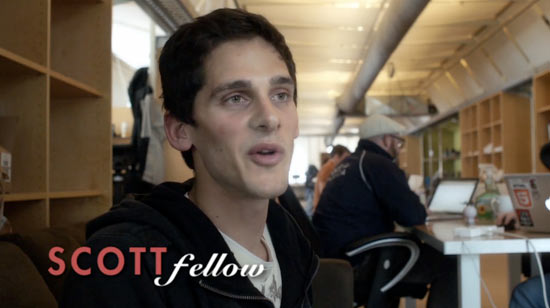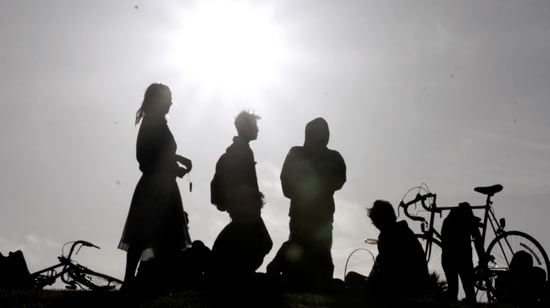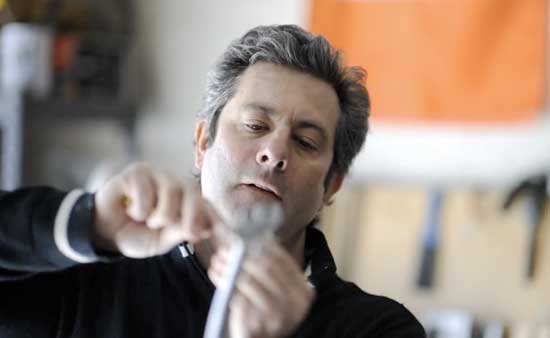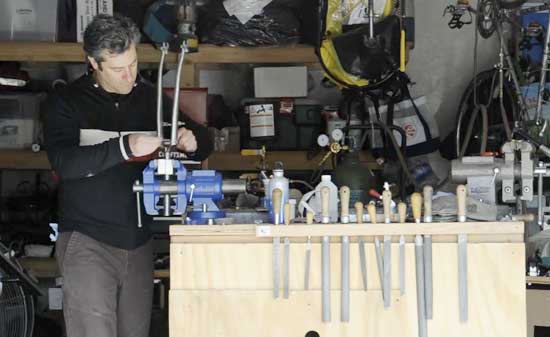The post An engaging, uplifting nonprofit promo video appeared first on Socialbrite.
]]>Code for America from Inkerman Road on Vimeo.
Code for America: 5 tips on upping your video game
 Code for America, a nonprofit that uses technology to transform local governments, boasts a creative, compelling promotional video that not only clearly describes its message but also engages its viewers to get involved. In just five simple steps, any nonprofit can follow its example.
Code for America, a nonprofit that uses technology to transform local governments, boasts a creative, compelling promotional video that not only clearly describes its message but also engages its viewers to get involved. In just five simple steps, any nonprofit can follow its example.
Be human and personal
1Be sure to make a personal connection early in the video. Many organizations and causes have a cohort of motivated, smiling people behind it. Bring these people to the forefront and show how upbeat and promising working for the cause is! Code for America illustrates its work environment by interviewing employees about what part of the job and cause they like. People are human and social creatures and are more inclined to stick with a video if they can relate to the on-screen subjects.
Use captivating visuals
2Watching a talking head is no fun for anyone. But listening to someone speak while looking at colorful flowers or a fun work environment is far more interesting. The supplemental footage in a video that does not capture a talking head is called b-roll. For example, Code for America’s video displays a shot of the office while founder Jennifer Pahlka speaks over it.

Get creative with light
3The video’s lighting is bright and vibrant throughout. This, quite literally, illustrates Code for America’s cause in a positive light. For example, founder Jennifer Pahlka is interviewed outside, allowing her to be shot with the warmth of natural lighting. The creative use of silhouettes, close-ups and angles, by video producers Inkerman Road, provides a nice break from the traditional head and shoulders frame.

Keep it short — under 2 minutes
4The ideal length of a web video is under 2 minutes. People love video, but attention spans today are dreadfully short. This Code for America piece clocks in at 2 minutes 30 seconds. Wistia, a popular Web video hosting service, found that the completion rate for a 30 second video is close to 90 percent, but it drops to barely more than 50 percent if the video is 2 minutes. Of course, completion rate might not be critical, as long as viewers get the important bits of your message and are happy with your video. But if the call to action is in the last 10 seconds and no one watches that far, you have a problem. Which is why it’s a really good idea to front-load the video with the call to action and other critical message elements. Whatever you want the targeted audience to walk away knowing should be at the start of the video.
Instill optimism and hope
5Code for America does not focus on what the government is doing wrong, or why its services are necessary. That would lower the mood of viewers. Instead, the organization encourages people to take action by focusing on the future and how the combination of technology and government can improve lives, ending with a positive message: “Try helping your government work better for you and see what happens.”
Did you improve your video to make it more successful? Are you interested in learning how you could? Let us know if you’d like us to analyze your video.
 This work is licensed under a Creative Commons Attribution-NonCommercial 3.0 Unported.
This work is licensed under a Creative Commons Attribution-NonCommercial 3.0 Unported.
The post An engaging, uplifting nonprofit promo video appeared first on Socialbrite.
]]>Here are a few ways to achieve effective storytelling with video, allowing you to spread awareness and advocate for a cause that deserves greater visibility.
The post Online advocacy video best practices appeared first on Socialbrite.
]]>Tips on techniques to get traction for your efforts
Target audience: Nonprofits, foundations, NGOs, social enterprises, cause organizations, brands, businesses, Web publishers, videographers, filmmakers, educators, film students.
 Every person, cause and business has a story to tell, and a few key video techniques can help bring these stories to life.
Every person, cause and business has a story to tell, and a few key video techniques can help bring these stories to life.
Here are a few ways to achieve effective storytelling with video, allowing you to spread awareness and advocate for a cause that deserves greater visibility.
The process: Discover the real story
When going into an interview, leave preconceived notions behind. Stereotypes are not only often wrong, but they also sometimes color perceptions. In the 2-minute story Living a Balanced Life, Major Multimedia tells the story of Charlie O’Leary, executive director of the Santa Fe Conservation Trust by day and artisan of one-of-a-kind custom bikes for racers, commuters and nature lovers by night. (See video at top.)
While we researched a story concept, developed a set of interview questions and prepared a preliminary shot list prior to the initial interview, once we began talking with Charlie we recognized the conservationist angle — what motivates his bike building, living a more balance life — was a much more interesting story. In the interview, listen deeply to your subject and deviate from your script by delving into the areas that could make a more interesting story.
Once you’ve captured the initial interview, the first step to discovering the angle of the story should be the transcribing process.
Crafting a captivating script
Write down the entire interview or narrative, word for word. If you don’t want to invest the time, hire a service such as Voss Transcription, who can turn the video narrative into text in one day turnaround typically. Read and re-read the transcription several times, then …
1) Highlight the best parts of the interview.
2) Add corresponding time codes and clip numbers from the video footage.
3) Edit the text down to a script (just the highlighted parts).
4) Make sure there is a really strong beginning and ending.
Also, to reel in the viewer, building an arc in the middle of the script (a conflict or struggle) is often desirable as well.
Get the key shots to support the script
Once the script has been defined, the key shots should be acquired to support the script. This B-roll footage – supplemental/background footage intercut with the interview – usually requires going back for a second day of shooting.
Three different types of shots work in sync for storytelling. They are: wide, medium and close-up. A good ratio of a sequence of shots for one particular scene is 25% wide, 25% medium and 50% close-ups and extreme close-ups. Notice how effective using a variety of shots can be for setting the mood of Charlie’s story and drawing the viewer with a series of shots in one particular sequence.
The “close” shot should typically precede or follow a wider shot. “An essential part of storytelling is to raise a question and then quickly answer it. Q: Whose hands? A: This person — this face”. For example, in the scene of Charlie working on the bikes, we shoot a tight shot of Charlie’s hands (shown in the video thumbnail above) followed by a medium shot of his face switching the angles as well to make it more interesting visually:

And an even wider shot to give a sense of place:

Try to get a variety of shots in each scene even if you don’t think you you use them. They may come in handy in the editing process. And don’t forget the cut-away shots — walking into garage, leaving on bicycle — that bring the viewer from one scene to the next.
A few more tips:
Always hold the shot for at least 15 seconds. It will give you some wiggle room to edit and make sure you get some workable footage. What if the camera shakes for a few seconds or accidentally stops recording in the middle of a nice shot? The “15-second rule” will help you get at least a few seconds of good stuff. Remember you can always take a 15 second clip and make it a two second clip – but not the other way around! Be willing to record for longer than you think is necessary, and take risks with more creative angles. You won’t be sorry.
Related
• Creating compelling advocacy videos for nonprofits
• Techniques to add dazzle to your advocacy video
• Resources for grassroots media makers
 This work is licensed under a Creative Commons Attribution-NonCommercial 3.0 Unported.
This work is licensed under a Creative Commons Attribution-NonCommercial 3.0 Unported.
The post Online advocacy video best practices appeared first on Socialbrite.
]]>